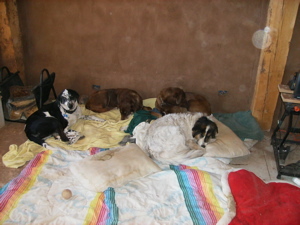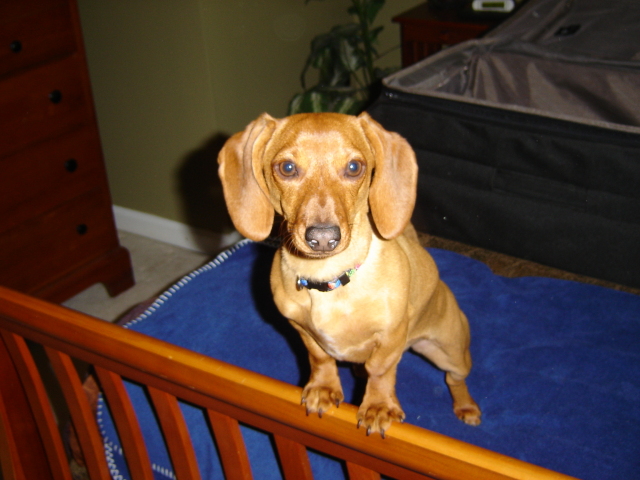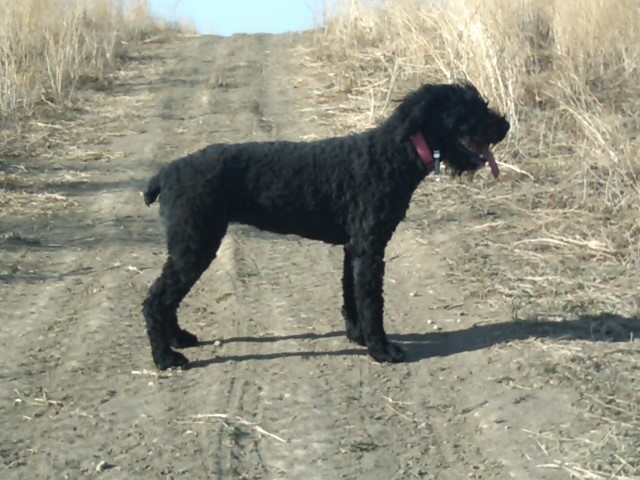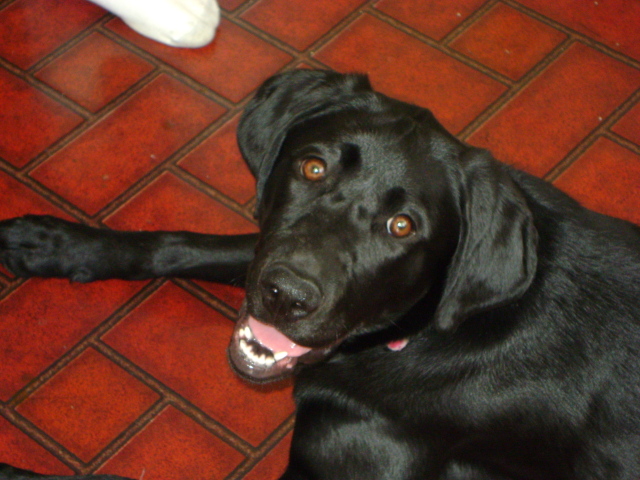QuestionI'm really hoping you can help us out!! We have a 7 month old Jack Russell that we can't walk anywhere near traffic. We took her for her first walk near a road when she was about 9 weeks old and she was terrified, backing away and barking. I ignored the behavior and kept walking hoping she'd realize it wasn't a threat to her. Ever since, she's been impossible to take near traffic. She's fine until she sees a car coming and then freaks out... yelping hysterically, growling, and lunging at the vehicle like she's out to kill it. If we try to so much as touch her or pick her up, she growls and bites at us. Even when we take her for a drive, anytime she spots a passing vehicle it's the same story. Recently I've taken her tried taking her out and just making her sit near a street where she can see the cars passing, hoping that after a while she'd calm down and realize it wasn't a big deal. That just made things worse, and even when we were far away from the road and any cars, she continued yelping like she was being murdered. I'm at a total loss as to how to handle the situation. Any help would be really appreciated!!
AnswerDear Candice,
Thanks for the question. You were sort of on the right track when you tried to get her to relax at a distance, but obviously the distance was too close.
Helping your girl (I'll call her Nugget) is a complex task that cannot be addressed by a few sentences in a forum. Since you know exactly what triggers her responses, you can succeed. You'll need the help of a certified trainer. Visit http://www.apdt.com and see if there is one near you.
Before you change Nugget's behavior, you'll need to begin by learning a bit about communication and your relationship. Visit this web site, read the article and follow the instructions. http://www.vin.com/VINDBPub/SearchPB/Proceedings/PR05000/PR00470.htm
Have you looked at my web site and read the information about problem behavior solutions? That will give you an idea of what to expect if you find a canine counselor that is capable of addressing Nuggett's fear.
Here's an excerpt..."Most dogs that exhibit fearful or aggressive responses perceive threats when there are none. In order to help a dog with this problem, the dog's inaccurate perception of danger associated with actions of other dogs, strangers, children, et cetera must be modified so that the dog no longer perceives the approach, actions or presence of theses triggers as threats. This is accomplished by a very effective process of systematic desensitization and counter-conditioning or behavior modification. If the triggers for aggression or fearful behaviors cannot be determined, the prospects for recovery are poor.
If the triggers can be identified (and the program is executed properly), the prognosis is good.
The exercises performed during behavior modification are based on the scientific principles of operant and classical conditioning. First we teach the people how to teach the dogs a few "words" that provide the dogs constant feedback about the appropriateness of behaviors. In addition, we teach the people how to teach the dogs a simple skill that can be used to help the dogs focus on a task that is incompatible with aggressive or fearful behaviors.
Next, the people are taught how to teach the dogs to relax in non-stimulating environments. These topics are addressed during the In-Home Behavior Consultation. In addition, our counselor may give the family specific instructions about managing the behaviors and the environment, diet and nutrition, obedience training, the significance of reinforcers, exercise, and more.
Once the people have taught the dog to relax, the actual treatment for behaviors can begin. The treatment exercises are performed during Bentley Refills. The dog is carefully exposed to low levels of the triggers (stimuli) for the unwanted responses during many short cycles and the dog's non-reactive behaviors are reinforced.
As the exercise progresses, each cycle is adjusted so that the dog is exposed to a slightly higher level of the stimuli than the previous cycle. The end result is a dog that is no longer aggressive or fearful in the presence of the stimuli, but is calm and relaxed in the presence of the stimuli. "
You could try it yourself by buying this book and following her specific instructions - The Cautious Canine by Patricia McConnell.
Happy Training!
AT

 uncontrollable beagle
Question
max
My beagle is a year and a half. Ive had hi
uncontrollable beagle
Question
max
My beagle is a year and a half. Ive had hi
 Sudden aggression within pack after a death
Question
Sudden aggression in o
We have an approximatel
Sudden aggression within pack after a death
Question
Sudden aggression in o
We have an approximatel
 Mini Daschund with anxiety issues
QuestionAbigayle
QUESTION: I have a 3 1/2 yr old
Mini Daschund with anxiety issues
QuestionAbigayle
QUESTION: I have a 3 1/2 yr old
 I was riding my bicycle when my 1yr old Bouvier bit my leg
Question
Pup
Hello, I have a 1yr old intact Bouvier bit
I was riding my bicycle when my 1yr old Bouvier bit my leg
Question
Pup
Hello, I have a 1yr old intact Bouvier bit
 Black lab - 1 yr
QuestionSheba
QUESTION: My lab loves to bite her
Black lab - 1 yr
QuestionSheba
QUESTION: My lab loves to bite her